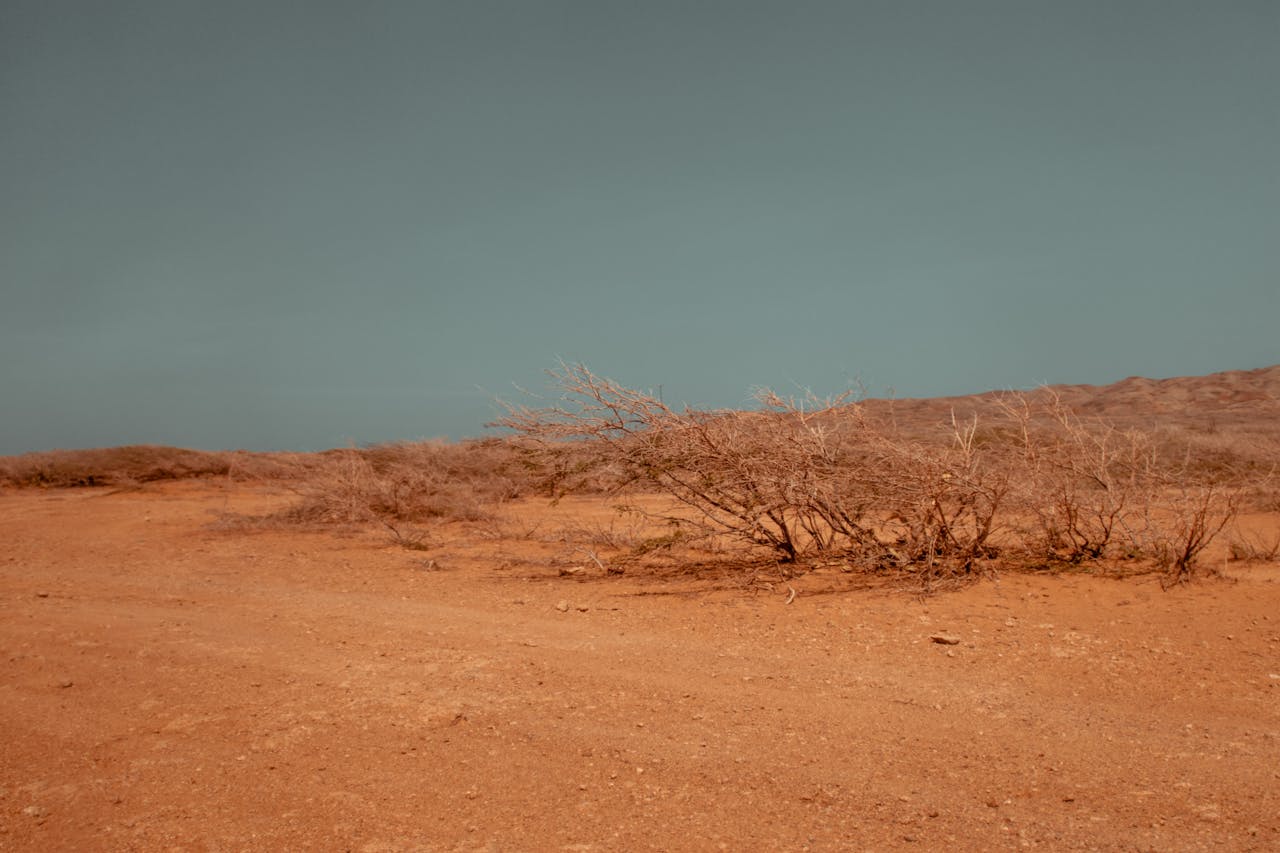How Big Are Spiders in Australia? Busting Myths About Their Size
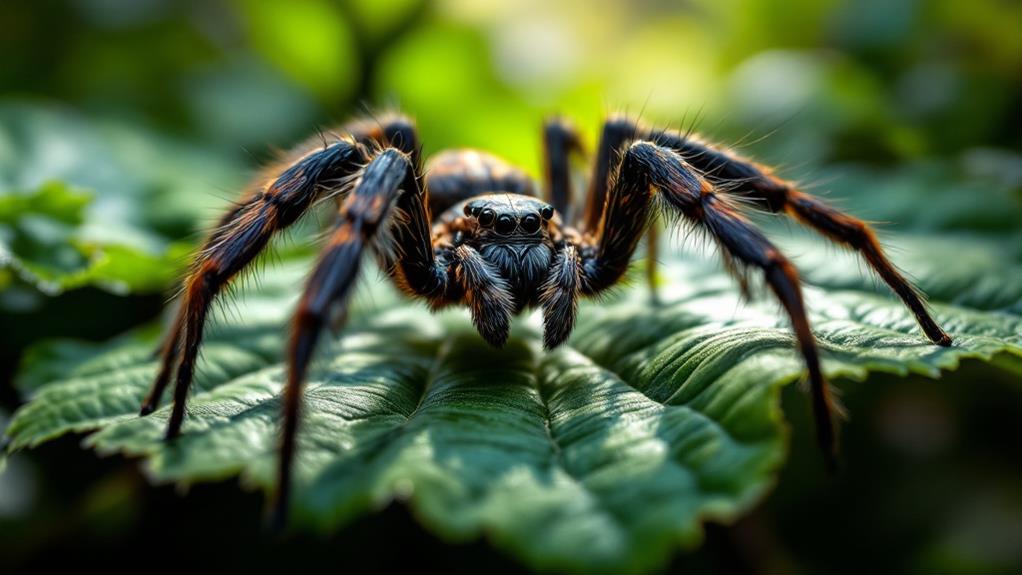
You might picture massive spiders everywhere in Australia, but that's a bit exaggerated. While Huntsman spiders can have a leg span up to 15 cm, their size is more startling than harmful. Many are harmless, with only 13 spider bite deaths recorded in a century, mainly from the smaller, albeit venomous, Redback spiders. Tarantulas and Wolf spiders also contribute to pest control without posing significant threats to humans. Understanding these creatures helps to dispel irrational fears and myths about their size and danger. Unearth unexpected truths and accept the ecological benefits these fascinating creatures provide.
Common Australian Spider Species
When you think of Australian spiders, the Huntsman likely springs to mind with its impressive leg span that can stretch up to 15 cm. Known as one of the common spider species in Australia, Huntsman spiders are renowned for their speed and agility rather than their webs. With 94 described species across the continent, these spiders have adapted to diverse environments, making them a staple of the Australian arachnid scene. Their large leg span often causes a fright, but they're generally harmless to humans.
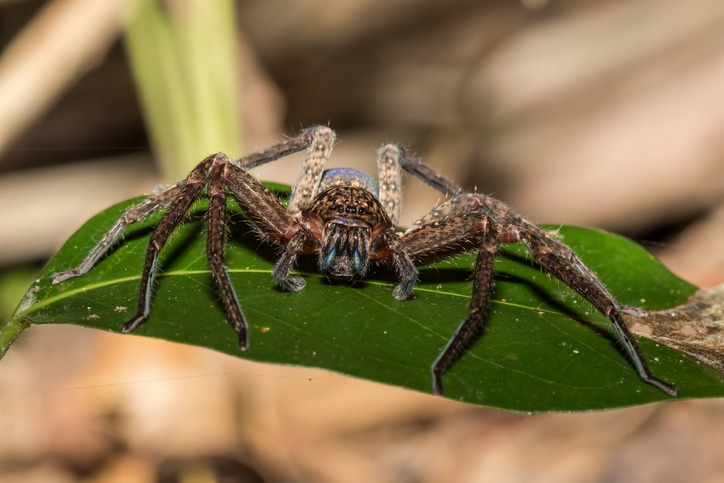
Beyond Huntsmans, Australia is also home to the Australian tarantula, another fascinating spider species. This spider is part of the Theraphosidae family and stands out with its hefty body, reaching several inches in length. Despite their intimidating size, they play an essential role in controlling pest populations.
Equally significant are the wolf spiders, which, while smaller, pack a punch with their robust build. They range from 1 to 4 cm in body length. Finally, the tiny Daddy-long-legs spiders, with delicate legs, often create the illusion of size, although their bodies measure just 1-2 cm. Each of these species adds to the rich tapestry of Australian wildlife.
Understanding Spider Size Variations
Australia's rich arachnid diversity often sparks curiosity and fear, especially regarding the size of its spiders. Spider sizes in Australia vary dramatically, from the impressive Huntsman spider, which can reach a leg span of up to 15 cm, to the more diminutive yet more feared Redback Spider. Despite its small stature, averaging about 1 cm in body length, the Redback is one of the more venomous spiders you'll encounter. Notably, size doesn't correlate with the danger these creatures pose; larger, less venomous spiders like the Huntsman are often less of a threat than their smaller counterparts.
It's common to find spiders around the house, and while their presence can be unsettling, most Australian spiders are harmless and even beneficial to the ecosystem. They help control insect populations, playing an essential role in maintaining ecological balance. Misconceptions and myths about spiders often exaggerate their size and danger, leading to unnecessary fear. Remember, the largest spider globally, the Goliath spider, isn't even found in Australia. So, while spider sizes can vary, don't let myths about spiders dictate your perception. Recognizing the diversity and understanding these variations can help reduce fear and foster appreciation.
Myths About Spider Dangers
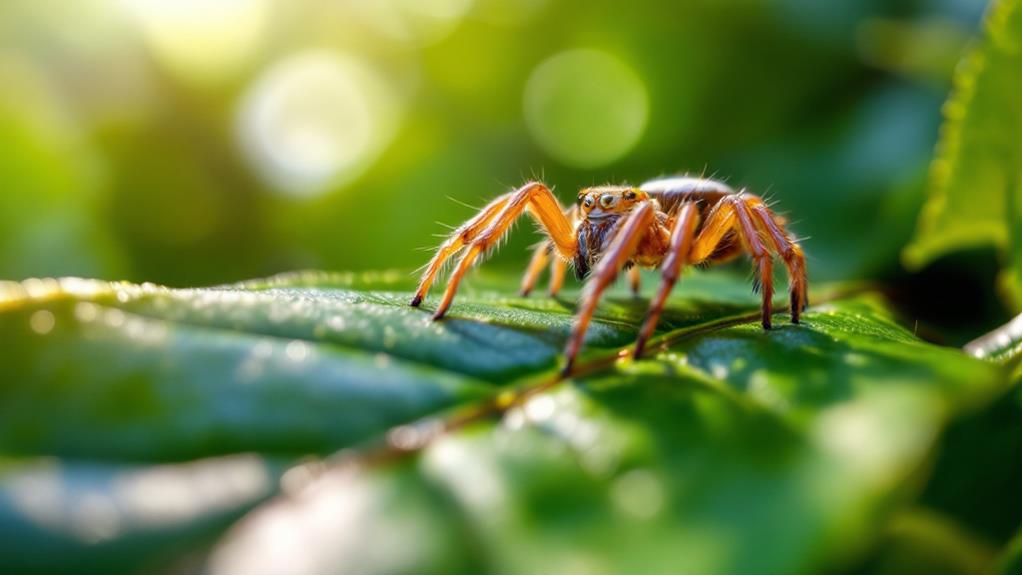
How often do you find yourself shuddering at the sight of a spider, thinking it's a deadly threat? It's a common reaction, fueled by spider myths that suggest all spiders in Australia are lethal. However, the reality is quite different. Most house spiders you encounter aren't dangerous at all. For instance, the Huntsman spider, despite its size, delivers a mild bite comparable to a bee sting. Its venom potency is low, causing only local pain, debunking the notion that bigger means deadlier.
In contrast, the much smaller Redback spider has a more potent venom, yet even its bites are rarely fatal. This highlights a common myth: size doesn't equate to danger. Fatalities from spider bites are exceptionally rare, with only 13 deaths from the Sydney Funnel-web spider over the past century. Most other spiders pose little threat, and their bites, like those of the White-tailed spider, are often benign.
Media exaggeration adds fuel to these fears, perpetuating the idea of deadly spiders lurking everywhere. Remember, the majority of spiders are harmless and beneficial, playing essential roles in controlling pest populations. Don't let myths overshadow these facts.
The Role of Size in Fear
In the domain of arachnophobia, it's hard to ignore the role size plays in amplifying fear. When you think of Australian spiders, the image of a large Huntsman with a leg span of up to 15 cm might come to mind. Despite their intimidating size, these spiders are generally harmless. Yet, the misconception that big spiders are more dangerous persists, fueling the fear of spiders. It's vital to comprehend that size doesn't determine venom potency. The smaller Redback spider, for instance, carries more potent venom than its larger counterparts, proving that bigger isn't always more dangerous.
Your fear of spiders might be more about their appearance than any real threat. Educational efforts can help debunk misconceptions about spider size and reduce irrational fears. Here are a few key points to reflect on:
- Size doesn't equate to danger: Larger spiders like the Huntsman aren't necessarily harmful.
- Venom potency varies: Smaller spiders, such as the Redback, can be more venomous.
- Education is fundamental: Understanding true spider characteristics can alleviate fear.
Spider Behavior and Habitat
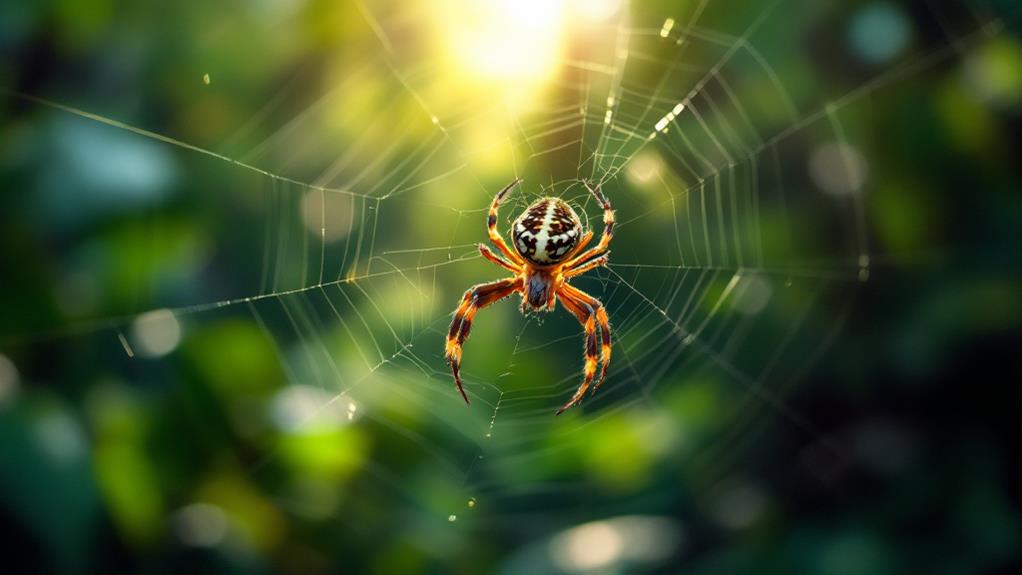
Spiders' behavior and habitats in Australia reveal fascinating details about these arachnids. You'll find that many Australian spiders prefer outdoor habitats, choosing spots like tree holes, rock crevices, and under bark. This choice shows their adaptability in selecting environments that suit their needs. Huntsman spiders, for instance, have a notable presence in peridomestic areas, such as garages and sheds. They're adaptable, thriving in spaces close to human activity while primarily hunting insects. Their large size and hairy bodies can make them appear intimidating, but these traits are just part of their unique spider behavior.
Interestingly, not all spiders are solitary. The social species Delena cancerides can be found living in groups under bark. This social behavior is quite distinct compared to the more solitary nature of other spiders. Where these spiders reside also varies across Australia. For example, Tasmania has fewer species compared to the mainland, indicating a difference in habitat diversity. By understanding these details about Australian spiders, you can appreciate their complex behaviors and varied habitats. Their adaptability and interactions with human environments highlight the rich tapestry of life that these creatures contribute to.
Real-Life Encounters With Spiders
While encountering spiders in Australia can be an unsettling experience, it's often more about misunderstanding than actual danger. When real-life encounters occur, especially with Huntsman spiders, the initial shock is usually due to their leg span, which can reach up to 15 cm. However, the Australian Museum assures us that despite their size, these spiders are generally harmless and not aggressive. Their sudden appearances might be startling, but they're more likely to help control pest populations than cause harm.
Spiders are found in a variety of settings, from urban homes to rural vehicles, where they may surprise you. It's crucial to understand that misconceptions about their size often lead to exaggerated fears. The average body length of a female Huntsman is about 2 cm, with males being slightly smaller at around 1.6 cm. These dimensions highlight how their imposing presence is more about leg span than body size.
Here are some key insights:
- Huntsman spiders are beneficial: They help keep insect populations in check.
- Misconceptions fuel fear: People often overestimate the danger.
- Mild spider bites: These are typically not severe, emphasizing their non-aggressive nature.
Debunking Misconceptions With Facts
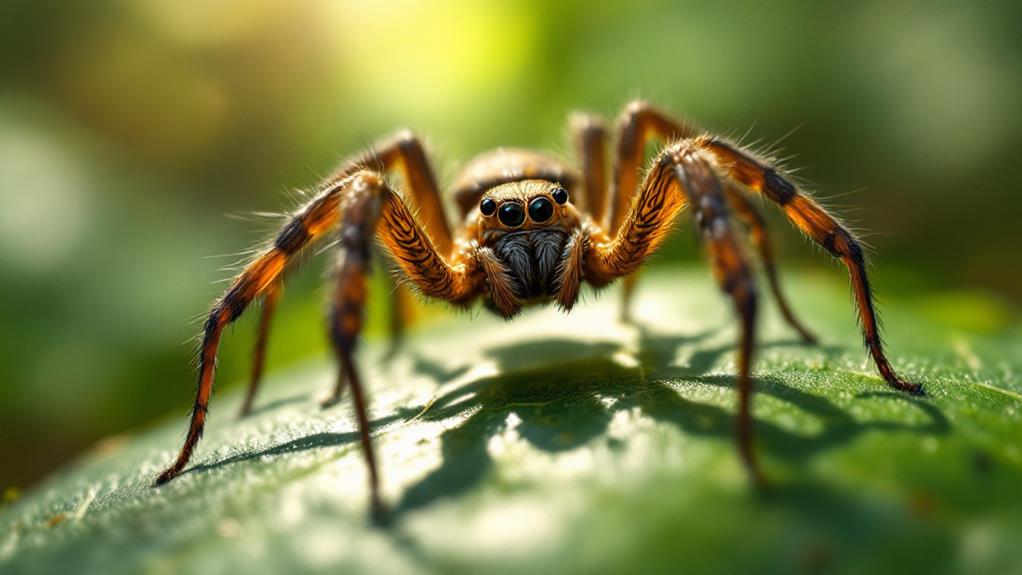
Shedding light on spider myths can help ease unnecessary fears. In Australia, misconceptions about spider size often lead to exaggerated worries. Take the Huntsman spider, for example. With a leg span of up to 15 cm, it's one of the largest spiders in the country. However, despite their impressive size, Huntsman spiders are harmless and frequently mistaken for tarantulas, which aren't even native to Australia. The largest spider, the whistling spider, measures about 4 to 5 cm in body length, yet it's significant to keep in mind that size doesn't always equate to danger.
Many people assume that larger spiders are more dangerous, but that's not necessarily true. Smaller spiders, like the Redback spider, can pack a more potent punch with their venom. The Redback measures only about 1 cm in body length, yet its bite can be more concerning than that of any larger species. This goes to show that the potency of a spider's venom isn't determined by size. By understanding these facts, you can reduce your fear of spider bites and appreciate that most Australian spiders, large or small, pose little threat to humans.
Appreciating Spiders' Ecological Benefits
Beyond the myths and fears, spiders in Australia offer significant ecological benefits that are often overlooked. These creatures, including Huntsman and Wolf spiders, are nature's pest control experts. They regulate insect populations, reducing the need for chemical pesticides and helping maintain ecological balance. When spiders come into play, you'll find fewer flies and mosquitoes around, safeguarding both the environment and your health.
Spiders cause a positive ripple effect in biodiversity. They are an essential part of the food chain, serving as prey for birds and other animals. This interaction supports a variety of species within their habitats, showcasing the interconnectedness of ecosystems. Even the often-misunderstood spiders, like the white-tailed spiders, play their part in this ecological web.
Appreciating these benefits can transform your perspective on spiders. When you understand their role, it leads to conservation and coexistence. Here are a few compelling reasons to appreciate these arachnids:
- Natural Pest Control: Spiders reduce harmful pests without chemicals.
- Biodiversity Support: Spiders contribute to the food chain and ecosystem health.
- Evolutionary Marvels: Their webs are efficient traps, highlighting their ecological significance.


